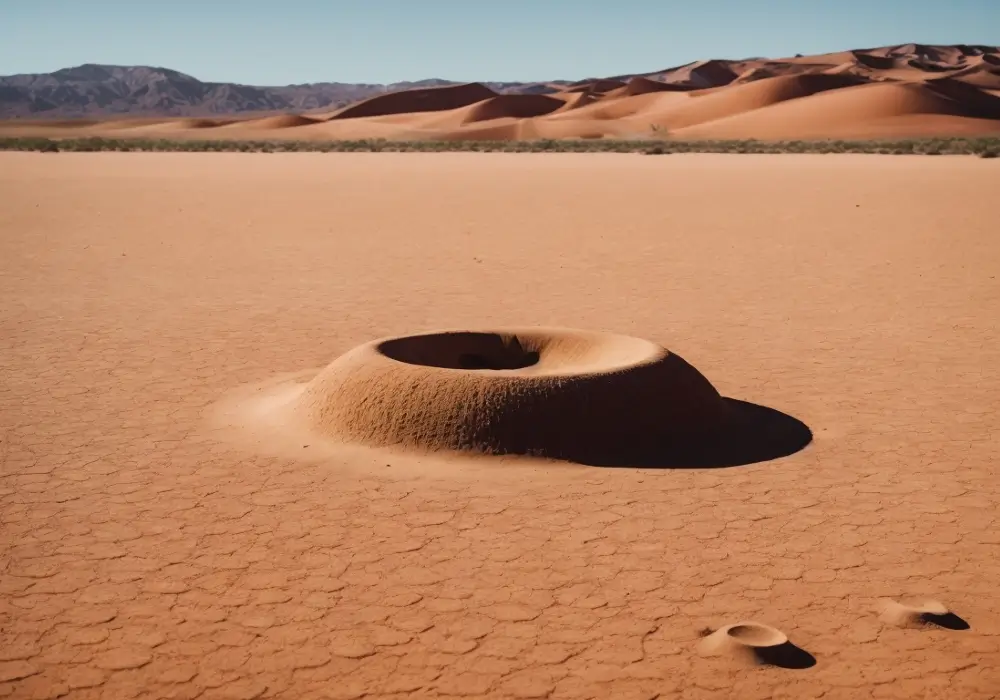
Unexplained “fairy circles” mysteriously appear in the desert landscape
More unexplained “fairy circles” have been mysteriously popping up in deserts around the world.
In deserts around the world, scientists have discovered new, previously unknown “myth circles” thanks to artificial intelligence.
More unexplained “imaginary circuits”.
“Fairy circles” are round discs of barren dirt that can cover miles of ground and have the appearance of rows of polka dots. The mysterious beginnings of this phenomenon have puzzled scientists for decades, and it may be much more widespread than previously thought.
Only the Namib Desert in South Africa and the outback of Western Australia have fairy circles been spotted before. However, a recent study found hundreds of additional locations in 15 different countries across three continents where plant patterns resembling fairy circles can be found. Scientists may now be able to better understand the global creation of imaginary circles.
Search the world using artificial intelligence
In the latest study, researchers analyzed high-resolution satellite data of arid ecosystems around the world to identify imaginary circuit-like patterns using a neural network, an artificial intelligence technology that mimics brain processes. Dr Emilio Gerado, lead author from the University of Alicante, described this as the first large-scale AI-based approach to such detection.
The team first tested the neural network using 15,000 satellite images from Namibia and Australia, half of which showed imaginary circles and the other half without them. The AI then analyzed nearly 575,000 plots of land, each about 2.5 acres in size, around the world. She identified circular patterns similar to well-known imaginary circles, and evaluated their size, shape, location, density, and distribution. A human review was then necessary to exclude non-fictional circular structures based on image interpretation and contextual information.
The results revealed 263 dryland areas Circular patterns resembling the fairy circles of Australia and Namibia. In addition to Madagascar, western Asia, central and southwestern Australia, the Sahel, Western Sahara, and the Horn of Africa, these arid regions are found throughout Africa.
Criteria that define imaginary circles
Fairy circles are not the only natural phenomenon that creates recurring circular gaps in the landscape. Dr. Stefan Getzen, a researcher at the University of Göttingen, Germany, highlighted the unique feature of fairy circles: the presence of a highly organized pattern between the circles, which distinguishes them from other gaps in vegetation. Getzen’s November 2021 paper identified chiral circuits and their distinctive properties, emphasizing their spatial periodic pattern, which is superior to other patterns.
However, the patterns in the latest study did not meet this high standard. It is worth noting that there is no universally accepted definition of imaginary circles, and the new study relied on guidance from multiple previous research. Some of the identified locations align with findings by Dr Fiona Walsh in the Australian outback, suggesting a matching of patterns, but they were not part of the latest survey.
Mysterious circles, mysterious origins
The study collected ecological data at fairy circle sites, revealing that they thrive in dry, sandy, alkaline and low-nitrogen soils. These patterns also enhance the stability of the ecosystem in the face of floods and drought.
However, the factors that shape imaginary circuits are complex and site-specific. Getzen suggested Climate and plant self-regulation of Namibian circleswith the activity of insects such as termites that do not form direct patterns.
In Australia, Walsh linked fairy circles to termites through research with indigenous communities. Termites are a staple in circles known as “linyji” and “mingkirri” in local languages, where indigenous knowledge dates back decades or even thousands of years. In Australia, termites are not just participants; It is the basic mechanism, which sheds light on the dynamics of termites, grass, soil and water.
Many questions about the fairy circle remain, but the authors hope that their global atlas will ignite new exploration of these mysterious phenomena, and inspire global scientists to solve the evolving mysteries of the fairy circle. Gerado expects their paper to lead to new research into the formation of imaginary circuits.






